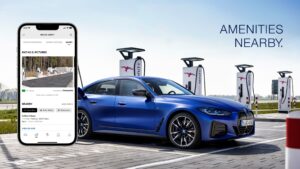AQN editor Thomas Barrett was in Hanoi, Vietnam over the recent Christmas period. He encountered a country that is trying to balance a booming economy with an increasing air pollution problem.
It’s December 25 in Hanoi, Vietnam. Thick smog has enveloped the country’s capital city for days, giving a whole new meaning to the term ‘white Christmas’. Face masks are ubiquitous, and the haze gives the 5000-year-old city an unnerving, spectral quality.
Vietnam’s economy has grown exponentially over the past two decades which has resulted in a deadly concoction for air quality. Flying into Hanoi’s airport you see the factories on the city’s outskirts and driving into the city from the airport there are agricultural fires, hallmarks of a still developing country.
When you get to the city, construction workers seem to be on every street, building the latest office tower or apartment complex.
Combine these with a burgeoning middle class who are driving more cars than ever before. And of course, the motorbikes, which have become a cultural icon of sorts for Vietnam.
Accepted consequence?
In 2019, Swiss monitoring app AirVisual was a hugely popular download for Hanoians who now check daily air quality levels like they would the weather.
The results have not been pretty, consistently giving ‘unhealthy’ AQI readings of 151-200. ‘Very unhealthy’ readings over 200 are also common and on several occasions during December 2019 it topped 300, making Hanoi, at one point, the most polluted city in the world.
Vietnam’s one-party communist government has been accused of being slow to act. Only in December did they offer the public health advice on how to protect themselves from exposure. They’ve announced a rollout of new monitoring stations, but there is scepticism.
Many have seen how Vietnam’s rapid development has damaged the environment, with worsening air quality seemingly an accepted consequence.
Hanoi, Vietnam.Investment money has flowed into Vietnam from China, Japan and South Korea in recent years. But there are signs that investor confidence is already shaky due to the plummeting air quality.
Miura Nobufumi, chairman of Japanese Chamber of Commerce and Industry (JCCI) told the Vietnam Business Forum that prolonged air pollution will lower foreign companies’ investment in Vietnam, adding that if it continues it has the potential to clip its wings and bring about an economic slowdown.
It’s also been claimed by the Global Alliance on Health and Pollution that air pollution kills over 70,000 people every year. Statistics like these are now resonating with a younger and more health-conscious population.
Not very positive
70% of Vietnam’s population is under 35. Speaking to a couple of young Hanoians, it’s clear that air pollution is taking its toll on a generation that have been told
to welcome the new economic opportunities that Vietnam’s booming economy is bringing.
Ngoc, in her 20s, says: ‘Every morning, I used to exercise outside. But over the past year, the pollution in Hanoi has got so bad. Because of particulate matter, we’ve been warned now not go outside by experts. So I’ve had to stop my morning exercise routine.’
Similarly, Phuong, also in her 20s, doesn’t believe the situation will improve anytime soon. If anything, she believes it will get worse before it gets better. ‘I am not very positive,’ she says.
‘It is really hard to change citizen’s habits when the public transport system is not changing. The air pollution makes me feel sick, my nose is constantly blocked,’ she added.
‘Besides, the increasing of numerous high building is also polluting the environment and contributing to air pollution. This will not change.’
Can you grow an economy like Vietnam’s without damaging air quality? A landmark report published in January 2020 by Hanoi’s National Economics University could change attitudes when it said air pollution is costing the economy up to £13bn a year.
For a country that aims to compete with the regional likes of Singapore and South Korea, figures like this could jolt the country into action. It simply can’t afford not to.
Photo Credit – Shutterstock













Leave a Reply